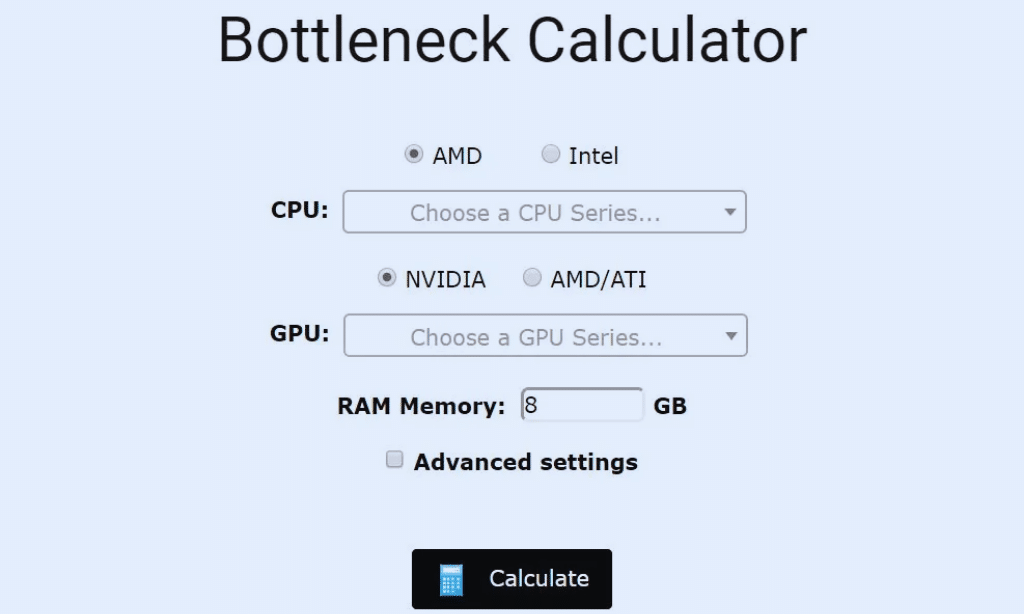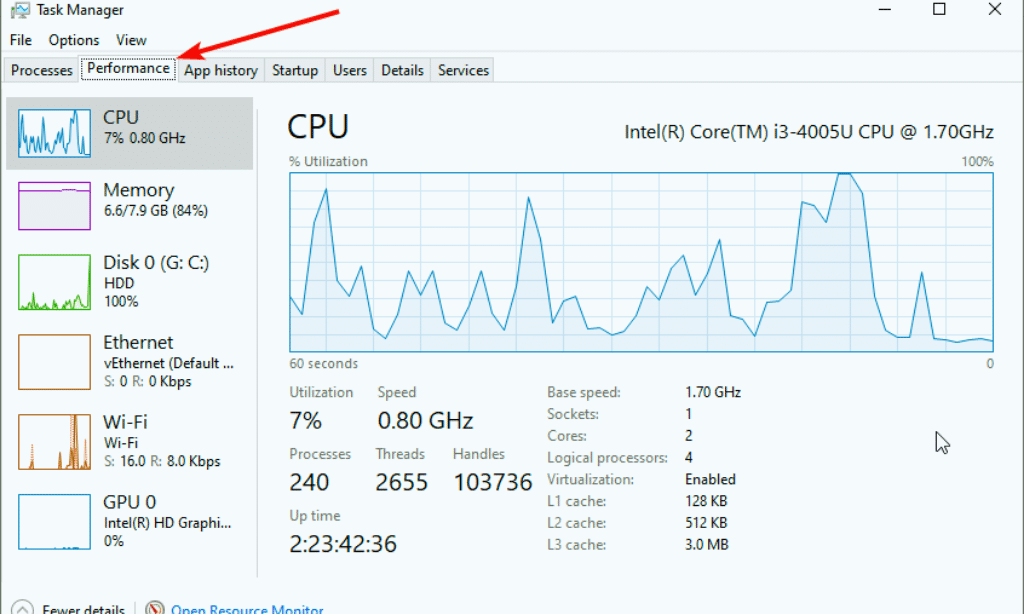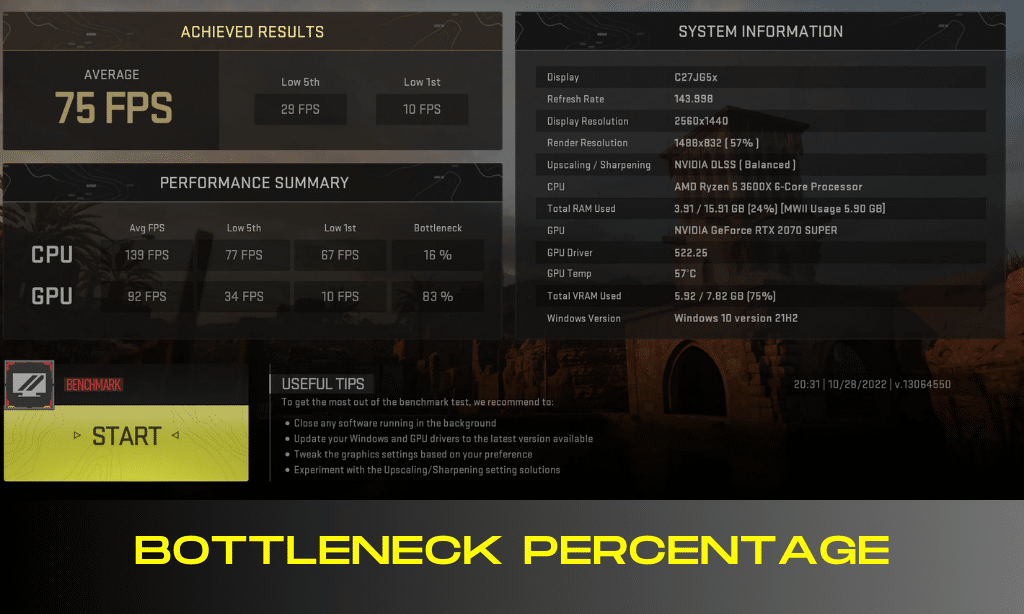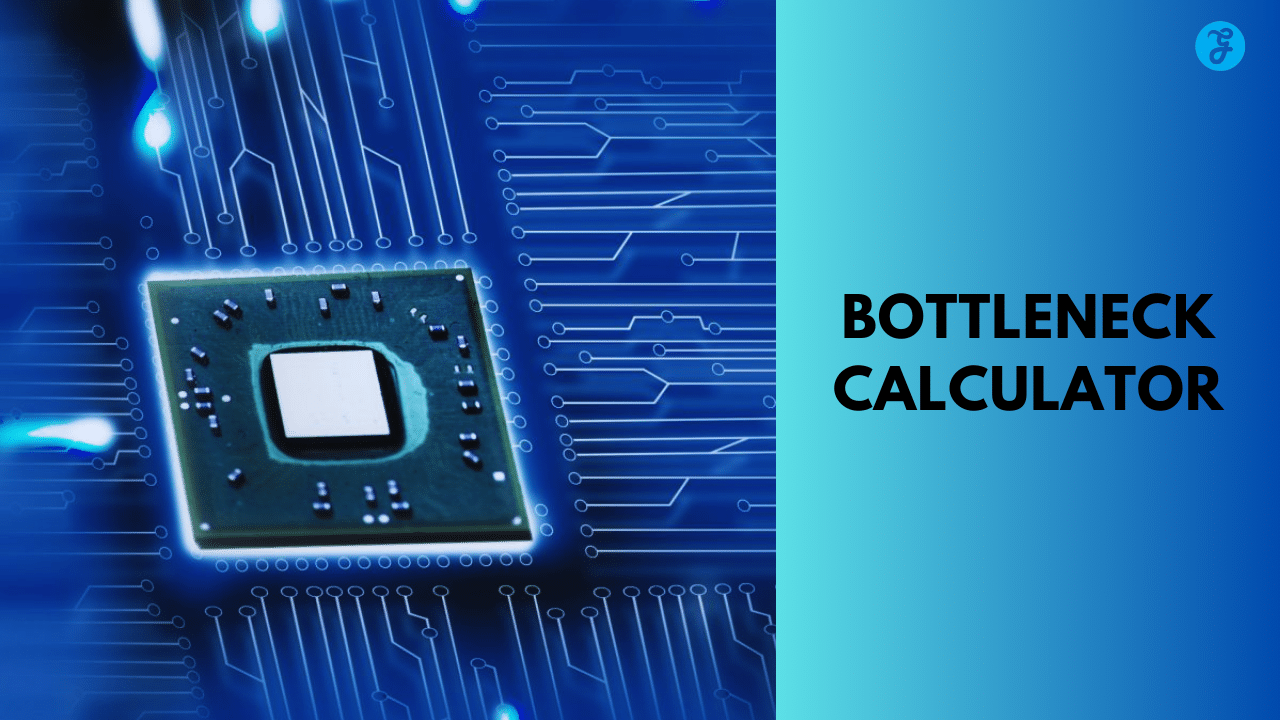Are you looking for the latest updates in the Bottleneck Calculator? If so, this blog post is here to help. PC gamers and enthusiasts use a bottleneck calculator to find potential performance issues in their system’s hardware components.
In this article, we’ll explore the basics of how a bottle calculator works and its latest update in 2024, as well as provide tips on getting the most out of your machine with minimal bottlenecks.
Whether you’re a beginner or an expert at building PCs, learn everything you need to know about Bottleneck Calculators to boost your gaming performance!
Understanding Bottleneck and Its Impact on PC Performance

Knowing how bottleneck impacts performance is essential to optimizing and tweaking your PC’s hardware configurations.
Definition of Bottleneck
A Bottleneck is a term used to describe an area of a computer system that has limited performance compared to the rest due to the hardware or software being too slow or unable to keep up with demands.
This can lead to decreased overall system performance, as fewer resources are available for other components, which can cause them to work less efficiently. In computers, CPU and GPU bottlenecks occur when certain components cannot handle the workloads they are given, which restricts how well they perform.
Similarly, RAM can also become a bottleneck if there is not enough available for all processes on the PC, which leads it to struggle under increased workloads or multitasking activities such as streaming high-quality video and playing graphics-heavy games concurrently.
How It Affects Computer Performance
A bottleneck is when one component of a PC system significantly limits the performance of its other components, thereby hindering overall computer performance. Bottlenecks can occur due to outdated or underpowered CPUs, GPUs, and RAM modules, as well as high-resolution displays.
When these components become mismatched in terms of quality and capacity, they cause delays within the PC’s processing speed resulting in inconvenient slowdowns during tasks such as gaming or streaming video content online. This results in choppy visuals with low frame rates, laggy interaction times while typing/clicking on programs, and an unresponsive cursor pointer.
In addition to noticeable system lags during gaming sessions where graphics-intensive levels are seemingly running sluggish, programs taking longer than usual to load causing bigger wait times between game runs are telltale signs that point towards bottlenecking issues present within a given system.
Importance of Identifying and Addressing Bottleneck Issues
The health and performance of your PC can be greatly affected by the presence of a bottleneck. A bottleneck is when there is an imbalance in the performance capabilities between certain components within a computer.
This results in one component being significantly slower than others, meaning that it cannot keep up with demands, leading to decreased overall performance. Identifying and addressing bottlenecks can have a significant impact on optimizing PC performance as well as improving gaming experiences.
With proper maintenance of all hardware components, users can keep their machine running smoothly and fast with minimal maintenance, ensuring that no individual component becomes too overwhelmed or unable to cope with the workloads demanded by software programs or games.
Read Also: Network Monitoring Tools.
How to Use a Bottleneck Calculator
Various types of Bottleneck Calculators are available today, each with its own set of steps to calculate the potential effects that hardware components can have on system performance.
Available Types of Calculators
There are various calculator types available to help users identify and remove bottlenecks in their computer system. The most popular type of calculator used for bottleneck detection is the integrated benchmark, which corresponds with your hardware setup and tests how smoothly different games or applications will run on your PC.
Other calculators, such as Time Spy & Superposition, also provide a more comprehensive assessment for both GPUs & CPUs. Another good option is GPU-Z software, a lightweight program that can be used to calculate clock speed compatibility, display adapter information, temperature readings, fan speed monitoring, etc.
For those using an AMD-based graphics card, Ryzen Master provides support by automatically overclocking your CPU or fine-tuning settings based on workloads. Meanwhile, GPUPI helps track performance changes over time by tracking changes across systems configurations, which makes it ideal for power users looking to optimize their rigs periodically.
Steps to Using a Bottleneck Calculator
- Download and install the relevant Bottleneck Calculator from a trusted source, such as PC Builds.
- Identify which components would need to be tested for bottleneck issues, including the graphics card’s memory clock speed and processor core clock speeds.
- Run the benchmark tests included in the calculator tool to assess how efficiently your computer is utilizing its resources based on various parameters given by you, like FPS (Frames Per Second).
- Review any recommendations provided in-app or look on guides online if unsure of what settings are best suited for your system configuration; this can help avoid bottlenecks while sustaining peak performance from your Computer System Components when gaming, streaming, etc.
- Use appropriate curves or charts within the results tab within some calculators to identify where on each line changes may warrant modification of individual hardware components or more drastic measures, such as replacing entire systems with newer models suitable for higher workloads
Factors to Consider
When using a Bottleneck Calculator to assess the performance of a PC, some key factors to consider include CPU and GPU usage, RAM capacity, and the types of tasks or applications for which it will be used.
For instance, when playing games, CPU bottlenecks happen when slower processing units limit the GPU’s ability to produce as much as it could. Furthermore, differing levels of memory usage between components can limit processes from running simultaneously, resulting in a further aesthetic slowdown.
Ultimately this can reduce the overall frames per second (FPS) count leading to lagging objects on-screen and reducing response time, particularly during Twitch games such as first-person shooters (FPS).
10 Best Bottleneck Calculators in 2024

Check out the top three accurate and user-friendly calculators for monitoring and optimizing your PC’s performance in 2021. Dive in to find out more!
1. PC Builds Bottleneck Calculator
PC Builds Bottleneck Calculator is a straightforward and user-friendly tool. Upon visiting the website, you’ll be prompted to input the details of the processor and graphics card you want to assess. The search bar will provide suggestions for your components.
You’ll also need to specify your PC screen resolution (width and height) and the purpose of your comparison, such as general tasks, processor-intensive tasks, or graphic card-intensive tasks. Once you’ve provided this information, the calculator will determine the percentage of bottlenecking.
What sets this calculator apart is that it not only provides the bottleneck percentage but also offers insights into how well these components will work together in different scenarios. It can help you decide whether an upgrade is a sensible choice.
2. TechWafer’s Bottleneck Calculator
TechWafer’s Bottleneck Calculator simplifies the process of identifying potential performance bottlenecks in a computer system. It empowers users to make informed decisions about their hardware by focusing on three crucial elements: the CPU, GPU, and screen resolution.
The CPU is the brain of the computer, responsible for executing tasks, while the GPU handles graphics-related processes, making it vital for gaming and multimedia applications. By choosing their components and screen resolution, users receive insights into potential bottlenecks that may occur in their system.
This tool is especially valuable for gamers and professionals looking to optimize their system’s performance, making it easier for them to make necessary upgrades or adjustments to achieve the best possible computing experience.
3. CPU Agent Bottleneck Calculator
The CPU Agent Bottleneck Calculator, like the others, requires you to input your CPU, GPU, RAM size, RAM speed, resolution, and quality settings. Each component’s respective input box offers a dropdown selection with pricing information, allowing you to estimate the cost of potential hardware upgrades.
The standout feature of this calculator is the comprehensive results it offers. In addition to the bottleneck percentage, it provides detailed specifications for the CPU and GPU. Furthermore, it offers a deeper analysis of streaming performance based on benchmark data from nine games, including titles like Shadow of the Tomb Raider, Forza Horizon 4, Call of Duty Modern Warfare, and Battlefield V.
Overall, it’s one of the top Bottleneck Calculators, providing you with a wealth of information for your decision-making.
4. TechNerd Bottleneck Calculator
TechNerd’s Bottleneck Calculator is a user-friendly solution designed to assist users in evaluating the compatibility and potential performance bottlenecks between their CPU and GPU. Upon accessing the website, users are greeted with an extensive list of CPUs and GPUs to choose from.
Additionally, they can specify their desired screen resolution to fine-tune the analysis. The calculator swiftly provides a bottleneck percentage, indicating the extent to which the CPU and GPU may limit each other’s performance. What sets TechNerd’s calculator apart is its unique feature of offering suggested upgrades and compatibility insights based on the components selected.
This invaluable information empowers users to make informed decisions about their hardware configurations, ensuring they optimize their computing experience.
5. Gamer’s Paradise Bottleneck Calculator
Gamer’s Paradise Bottleneck Calculator is a dedicated tool tailored to the needs of gamers and PC enthusiasts. The intuitive interface allows users to input their CPU and GPU details, and they can further specify their preferred screen resolution, a critical factor for gaming performance. The calculator swiftly and accurately computes the potential bottleneck percentage, providing users with a clear understanding of their system’s performance capabilities.
Beyond this, the tool goes a step further by offering insightful recommendations for potential hardware upgrades or settings adjustments. These recommendations are aimed at achieving a balanced and optimal gaming experience, making it an indispensable resource for avid gamers.
6. Hardware Harmony Bottleneck Calculator
Hardware Harmony’s Bottleneck Calculator simplifies the process of assessing system performance by focusing on the compatibility of the CPU and GPU. Users begin by selecting their CPU and GPU from an extensive dropdown menu, and they can further refine the analysis by specifying their preferred screen resolution.
The calculator efficiently processes this data and delivers a bottleneck percentage, aiding users in identifying potential performance limitations within their system. What makes Hardware Harmony stand out is its commitment to providing users with actionable insights.
In addition to the bottleneck percentage, the tool offers tips and recommendations on how to optimize system performance. This valuable guidance ensures that the user’s hardware configuration is ideally matched to their specific tasks and requirements.
7. GameMaster Bottleneck Calculator
GameMaster Bottleneck Calculator is a valuable tool catering to the needs of gamers and professionals alike. Users are encouraged to input their CPU and GPU selections, with the added flexibility of fine-tuning the screen resolution, which plays a pivotal role in gaming and multimedia tasks.
The calculator efficiently processes this data and delivers a clear bottleneck percentage. What truly sets GameMaster apart is its provision of customized suggestions for upgrades or adjustments based on the components selected. This feature is a valuable resource for users seeking to optimize their system for gaming or demanding professional tasks, ensuring that their hardware operates harmoniously and efficiently.
8. Performance Pro Bottleneck Calculator
Performance Pro Bottleneck Calculator is a user-friendly tool created for assessing potential performance bottlenecks within a computer system. Users initiate the analysis by selecting their CPU and GPU while also specifying their preferred screen resolution. The calculator swiftly provides a bottleneck percentage, offering users valuable insights into their system’s performance capabilities.
Going beyond this, the tool offers recommendations for potential hardware upgrades and optimizations, making it easier for users to make informed decisions about their computer’s capabilities and ensure their hardware configuration aligns with their specific needs.
9. FutureTech Bottleneck Calculator
FutureTech’s Bottleneck Calculator is designed with a user-friendly approach in mind. Users simply select their CPU and GPU and specify their screen resolution, a key factor influencing system performance. The calculator efficiently processes this information to determine potential bottlenecks, providing a clear and easy-to-understand percentage.
Additionally, it offers users valuable insights into suggested upgrades or system tweaks aimed at enhancing overall performance and ensuring hardware compatibility. This simple yet effective tool is a must-have resource for those seeking to optimize their computing experience.
10. ProGamer Bottleneck Calculator
ProGamer Bottleneck Calculator is a valuable asset for gamers aiming to assess the performance of their PC components. Users are prompted to select their CPU and GPU, with the added flexibility of specifying their intended screen resolution. The calculator efficiently computes the bottleneck percentage and provides recommendations for optimizing gaming performance.
This tool is a must-have for the gaming community, as it empowers users to make informed decisions about their hardware configuration, ensuring that they achieve the best possible performance in their gaming pursuits.
Can We Trust Bottleneck Calculators?
To what extent are Bottleneck Calculator results reliable and accurate? Find out more about the issues that can affect accuracy in this blog.
Reliability of Results
Bottleneck calculators are mainly used to identify potential deficiencies in a computer’s hardware. While the results they deliver can be helpful, it is important to remember that there’s only so much these programs can do and that their accuracy may not always reflect real-world performance accurately.
The calculation of bottlenecks requires complex balancing between components’ characteristics, which programmers or even PC experts sometimes struggle to grasp themselves; hence, exact data from reality often might differ from calculated numbers.
Common issues such as overclocking and cooling systems leading to differently configured machines in two systems being tested with the same calculator could also lead to inaccurate results.
Factors That Can Affect Accuracy
When using a bottleneck calculator, there are numerous factors that can affect the accuracy of its results. The database behind such calculators is unknown, making it hard to determine how reliable their information is.
Furthermore, the variables for certain PC components may not be taken into account, which could lead to inaccurate readings. It is also important to note that benchmarking processes differ from one system to another so exceptional results and widely varying numbers may appear due to Biblical Church’s unforeseeable gameplay or setup changes on an individual basis.
It’s for these reasons that users should practice caution when utilizing Bottleneck Calculators and consider alternative methods or expert advice when analyzing system bottlenecking in detail.
What is a Good Bottleneck Percentage?

Every PC can tolerate a certain level of bottlenecking, though the ideal percentage to aim for is less than 10%, so find out how you can achieve this goal with the help of a reliable Bottleneck calculator.
Acceptable Level of Bottleneck
When it comes to PC performance, an acceptable bottleneck percentage is 10% or lower. This means that the utilization of the different components in a computer system should not exceed 90%.
Utilization below 50% is low, between 50-70% is normal, and when it goes above 70%, it is considered high. It’s important to note that the acceptable level of bottleneck can vary depending on the specific system and use case.
For example, for gaming purposes where a consistent frame rate matters greatly more than absolute peak performance, having a somewhat higher buffer might be preferable in order to avoid sudden FPS drops due to component saturation.
On the other hand, if raw speed and efficiency are paramount, then this might necessitate severe optimization measures such as further overclocking with increased voltages or using faster parts with much less tolerance for bottlenecks.
Average Bottleneck Percentages
When it comes to evaluating the performance of a PC, one way of doing so is by looking at bottleneck percentages. Bottleneck percentages measure how efficient your computer setup is and are given as a percentage value from 0-100%.
It refers to what proportion of power the weakest hardware component in your system can handle relative to other components with higher strength levels. The lower the bottleneck percentage, the better—this means that all parts in your system work together optimally and give you an overall good experience.
An acceptable level of bottleneck would be anywhere below 10%, but ideally somewhere around 5%. For example, if you have an Intel Core i7 9700K CPU with 16GB DDR4 RAM paired with an Nvidia GTX 1080 Ti GPU, they can collectively share workloads efficiently, resulting in just about 6% total bottlenecks.
Takeaways
The Bottleneck Calculator proves to be an invaluable tool for PC enthusiasts and gamers, allowing users to quickly identify performance limitations in their systems. By entering their component list into the calculator, users can determine whether or not they are being bottlenecked and receive accurate suggestions and recommendations on how to overcome the issue.
It is important that users use only trusted tools like TechWafer’s Bottleneck Calculator when attempting to identify bottlenecks, as other calculators available online may produce unreliable results.
Additionally, manually checking for bottlenecks by identifying hardware components and using benchmarking tools is another option available but one should also have enough technical understanding of computers before doing so.
By upgrading your system with recommended hardware builds, you can eliminate unnecessary bottlenecks while still keeping a budget-friendly price tag on each part!








































